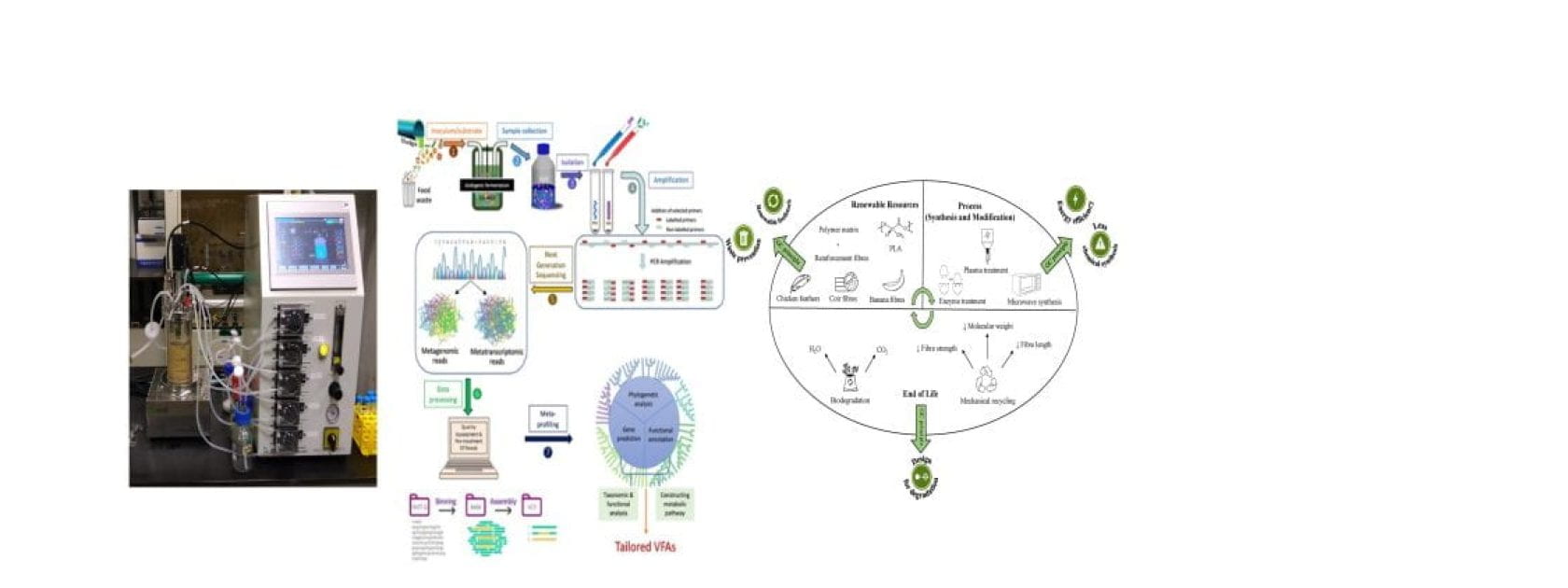
Research @ Bioreaction Engineering Lab
- Sustainable manufacturing of high-value bio-products via biochemical engineering – platform biochemicals, biopharmaceuticals/biotherapeutics, biomaterials, agri-bioinoculants, bioenergy
- Microbial engineering and metagenomics
- Process intensification based on In-situ Product Recovery (ISPR) and continuous bioprocessing
- Waste valorization and biorefinery
- Contribute towards Sustainable Development Goals (SDGs) 7, 9, 11 and 13, and circular (bio)economy
Why is this research important?
Sustainable bioprocessing and biomanufacturing technologies are critically needed to boost the Canadian bio-based economy in economic production of bio-based products. Their high relevance to Canada has been witnessed during and post COVID-19 pandemic. My research perfectly aligns with and fulfils this requirement and therefore has direct and significant implications towards sustainable biomanufacturing, agriculture, energy, and bio-health sectors. More importantly, it contributes to the SDGs which are needed to improve life.
How U of G makes this research possible?
Being at the forefront of bioprocessing and bioeconomy, U of G enables me to perform cutting-edge research in the area of biological engineering. This allows me to attract top students with diverse backgrounds in biochemical, microbial, agricultural and environmental engineering. The numerous funding opportunities available for graduate students provide a good research support to them along with a world-class training.
Research Themes
- Bio-based surfactants for biomedical and bio-environmental applications.



Bio-environmental applications of biosurfactant (bio-detergent):

Selected recent publications:
Zhu et al. (2021) New Biotechnology https://www.sciencedirect.com/science/article/pii/S1871678421000972
Johnravindar et al. (2022) Bioresource Technology https://www.sciencedirect.com/science/article/abs/pii/S0960852422009075
Kumar et al. (2023) Sustainability https://www.mdpi.com/2071-1050/15/1/59
Kumar et al. (2023) Microbiological Research https://www.sciencedirect.com/science/article/abs/pii/S0944501323000885
2. Process and metagenomics platform for enhanced carboxylate and biomethane production.


Selected recent publications:
Kumar et al. (2023) Bioengineered https://www.tandfonline.com/doi/full/10.1080/21655979.2023.2180583
Johnravindar et al. (2022) Bioresource Technology https://www.sciencedirect.com/science/article/abs/pii/S0960852422010112 Johnravindar et al. (2021) Journal of Environmental Management https://www.sciencedirect.com/science/article/abs/pii/S0301479721005193
3. Novel Biomaterials for Sustainable Fashion and Packaging
“Hello to Vegan Leather!”


Selected publications:
Rafiee et al. (2021) Current Opinion in Green and Sustainable Chemistry https://www.sciencedirect.com/science/article/abs/pii/S2452223621000389
Rafiee et al. (2021) Bioresource Technology Reports https://www.sciencedirect.com/science/article/abs/pii/S2589014X21000694
Chopra et al. (2023) Current Opinion in Green and Sustainable Chemistry https://www.sciencedirect.com/science/article/pii/S2452223622001596 Saini et al. (2023) Mycology https://www.tandfonline.com/doi/full/10.1080/21501203.2023.2278308
4. Biologics, biotherapeutics, and agri-biostimulants

Trichoderma biocontrol agent: Production and antagonistic effect on plant pathogens Fusarium oxysporum and Alternaria solani
Publications
Selected Peer-Reviewed Journal Publications Google Scholar
Books




